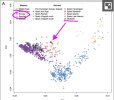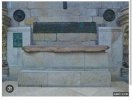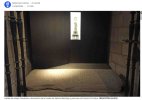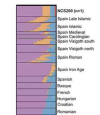- Time of past OR future Camino
- Too many and too often!
A number of Spanish and international news websites are reporting that a group of archaelogists have claimed to have identified a skeleton found last century under the Santiago cathedral as that of Teodomiro - the 9th century Bishop of Iria Flavia who first identified bones discovered on a Galician hillside as those of the Apostle James and therefore was indirectly responsible for the phenomenon of pilgrimage to Santiago de Compostela. The identification is based on DNA analysis and other archaeological evidence.
"It is important to underline that he is the oldest historical character ever identified in Spain and one of the oldest in Europe,” said Pérez Ramallo, a researcher from the Norwegian University of Science and Technology.... Teodomiro was, unconsciously, the founder of the current city of Santiago de Compostela, but above all of the Camino de Santiago — vital for the course of the history of the Iberian peninsula, and especially of Galicia and Spain.”

 www.thetimes.com
www.thetimes.com
"It is important to underline that he is the oldest historical character ever identified in Spain and one of the oldest in Europe,” said Pérez Ramallo, a researcher from the Norwegian University of Science and Technology.... Teodomiro was, unconsciously, the founder of the current city of Santiago de Compostela, but above all of the Camino de Santiago — vital for the course of the history of the Iberian peninsula, and especially of Galicia and Spain.”

DNA testing ends debate over origins of Camino de Santiago pilgrimage
A team of archaeologists claim to have identified the 9th-century bishop Teodomiro of Iria Flavia, who founded the city of Santiago and the pilgrimage to it































